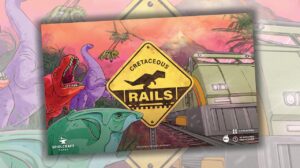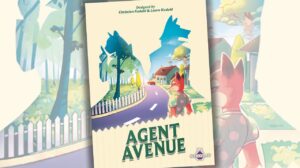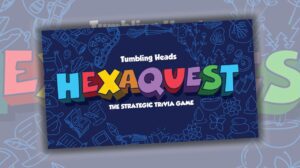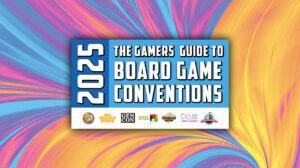Disclosure: Meeple Mountain received a free copy of this product in exchange for an honest, unbiased review. This review is not intended to be an endorsement.
All Aboard!
Ticket to Ride. You know the name, you know the game. It’s one of those titles people love to hate—and maybe also hate to love. The iconic game is now old enough to visit the bar car, having first hit shelves in 2004, and its success has only grown over the years. As of 2024, Ticket to Ride has sold 18 million copies worldwide. That’s a lot of plastic trains! There are even aftermarket trains from The Little Plastic Train Company to spruce up the table presence.
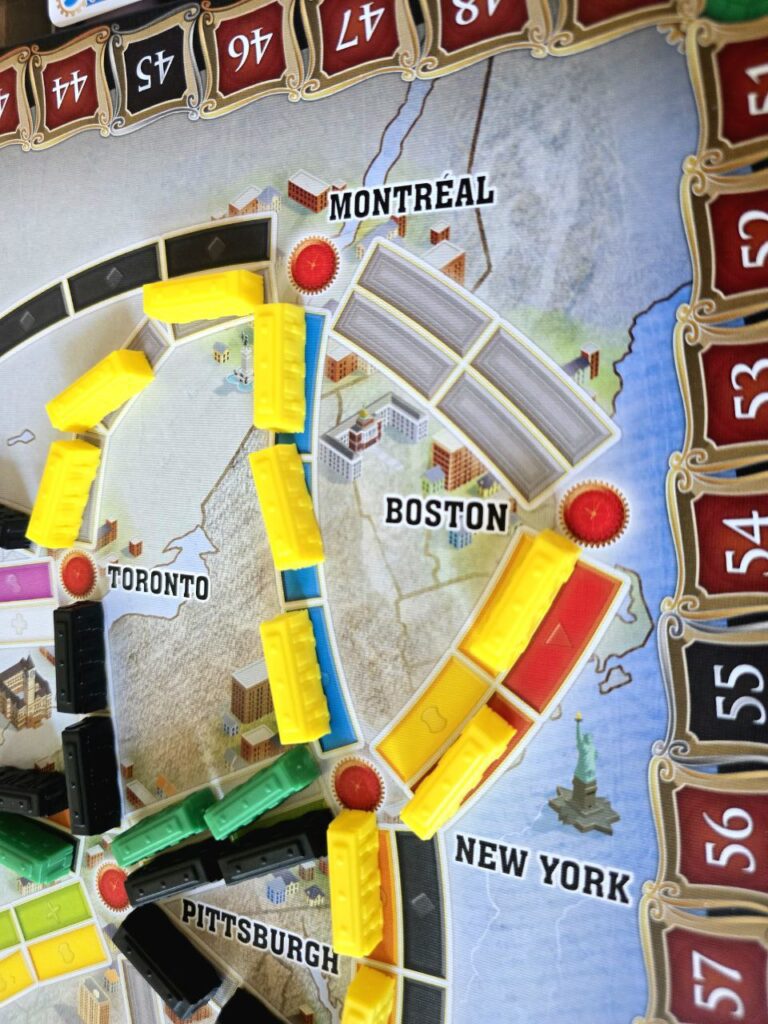
The game has branched out far beyond its original 1910 North American map. There are 2-player versions like Ticket to Ride: San Francisco and Ticket to Ride: New York, and worldwide expansions that include Japan, Northern Lights (Nordic countries), Sub-Saharan Africa, and more. Between kids’ editions and digital versions across multiple consoles, and Ticket to Ride children’s books, there’s truly a Ticket to Ride for everyone. Recently, a legacy version, Ticket to Ride: Legacy of the West was released, which I’m excited to break out with my legacy group later this fall.
The game has also made a positive impact through its partnership with the Breast Cancer Research Foundation (BCRF), selling limited-edition pink trains with proceeds benefiting the foundation. As of this writing, more than $184,000 has been raised through this campaign.
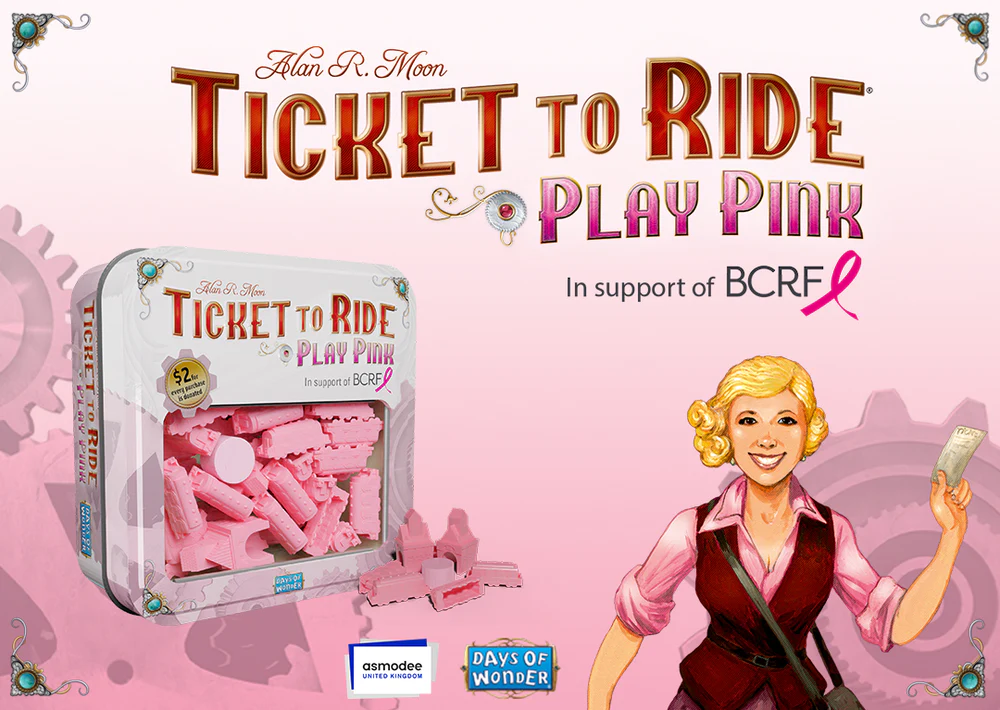
The world of Ticket to Ride is vast. If you haven’t heard of it, I recommend you stop reading and go check it out immediately. It’s a cultural phenomenon in board gaming, even earning its own Saturday Night Live skit where Kristen Wiig and Will Forte are sucked into the game Jumanji-style. Alongside Settlers of Catan, it’s one of the two titles that brought the majority of hobby gamers into the fold.
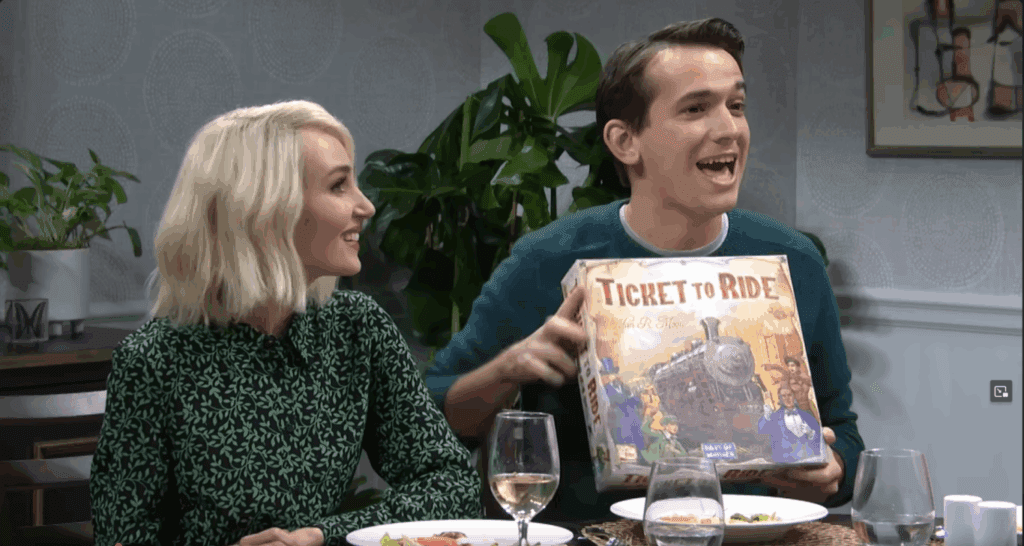
Recently, the base game received a small refresh with updated art on the cards and board. While we’ve previously written about the passion of Ticket to Ride, this review focuses on the game’s new coat of polish and my own thoughts about riding the rails.
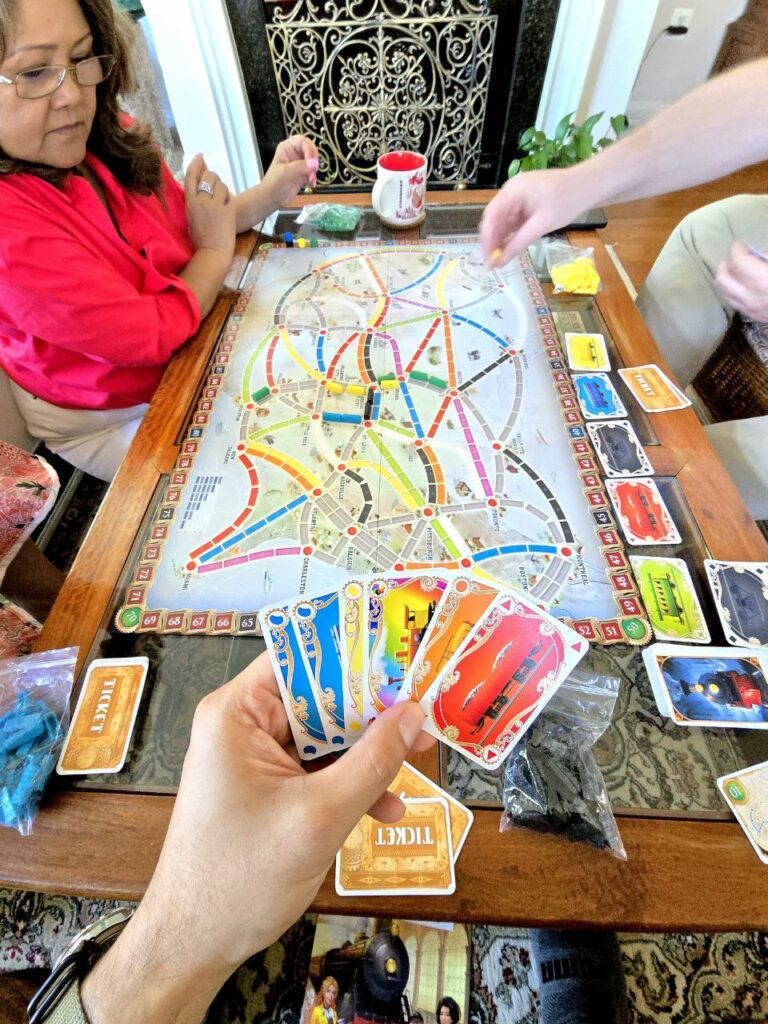
Trains Y’all
Ticket to Ride is simple and straightforward. Alan R. Moon has said that the rules could fit on a train ticket, and the game can be taught in under five minutes. For those unfamiliar, the game plays out over a series of turns until one player ends their turn with two or fewer of their 45 train pieces remaining.
On their turn, players choose one of three actions:
- Claim a route by playing the required number of same-colored cards and placing trains of their color on the board (no partial payments!).
- Draw two train cards from either the face-up market or the face-down deck.
- Draw new tickets, keeping at least one. Tickets list specific city-to-city routes that score points if completed by the end of the game—but cost points if left unfinished.
Players also earn immediate points for each claimed route, with longer routes worth more. Play continues until the game-ending condition is met, and the player with the highest total score wins.
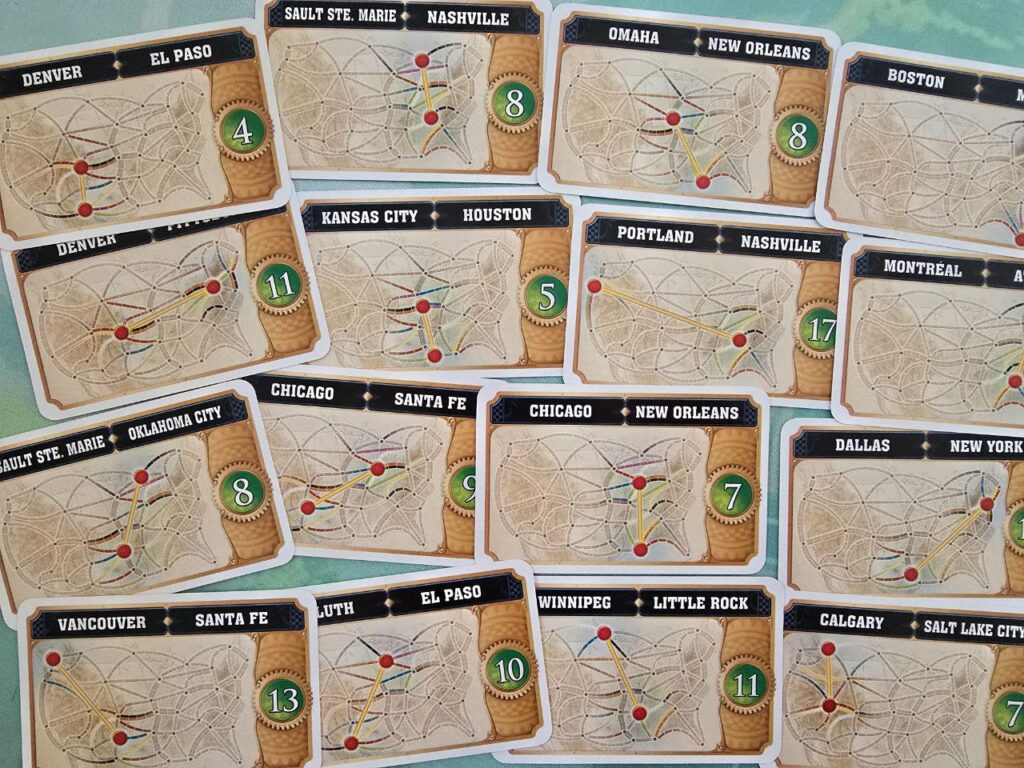
Good for the Soul
It’s wild how polarizing opinions on Ticket to Ride can be. In hobby circles, I’ve seen it consistently mocked or dismissed, but there’s a reason it has stood the test of time. It’s mechanically sound, short enough for casual play, and approachable enough for non-gamers. Sure, luck plays a role, and nothing is more frustrating than drawing two useless cards, but the heart of the game lies in adapting to the ever-changing board as prime routes vanish. The ability to pivot—shifting from your original plan to seize unexpected opportunities—is one of the skills that keeps the game engaging after countless plays.
For a family game, it can be surprisingly cutthroat. Competition escalates quickly as players race to complete routes and block opponents, and you can almost feel the tension around the table when someone hesitates just a little too long before placing trains. I’ll admit I’m often reluctant to play, mainly because I prefer other gateway games like Istanbul, The Quacks of Quedlinburg, or Ethnos, but I’ve never had a bad time. Even when I lose, there’s something satisfying about watching the colorful board fill up and seeing how everyone’s routes intertwine—sometimes harmoniously, sometimes in ways that cause barely concealed frustration.
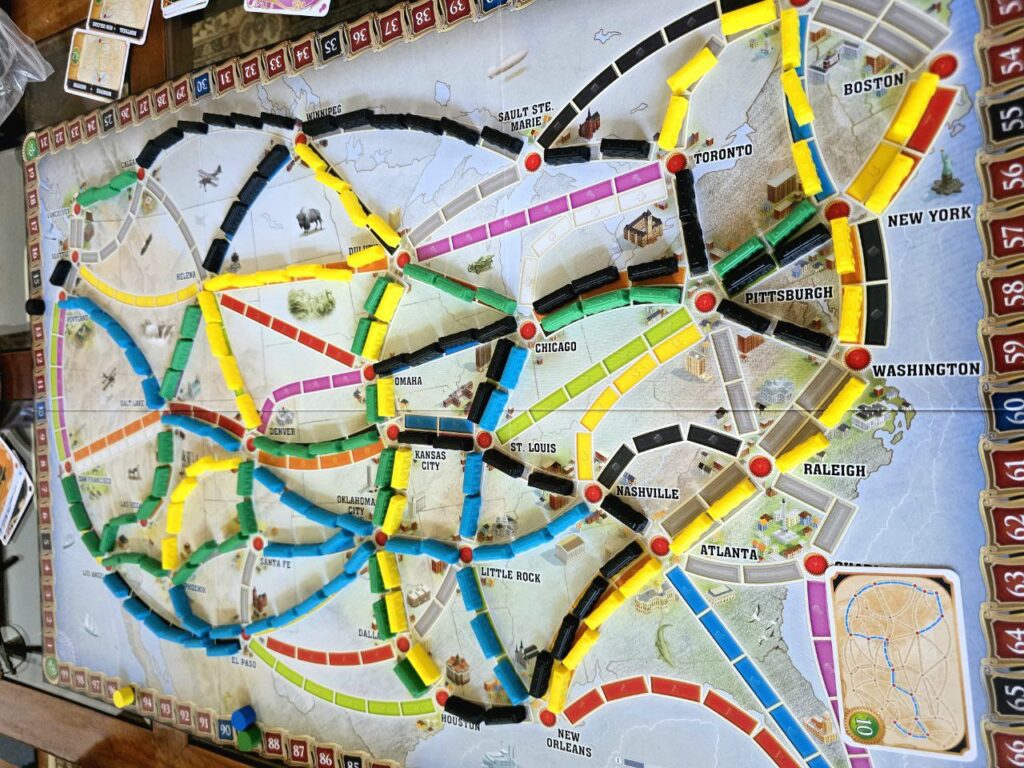
In my early gaming days, I made the mistake of introducing complex games too soon, which scared some people away from the table, never to return. Ticket to Ride is a perfect reminder to meet your audience where they are. The aesthetic is warm, bright, and colorful, and the end result—a map covered in a tangle of multi-colored train lines—is basically made for Instagram. The updated edition leans into this even more, adding famous buildings to the city points, making it fun to spot landmarks from Kansas City to Chicago to Calgary. The card art pops, and the overall presentation makes this a visual treat. It’s almost as if the art design folks thought “how can we make this game more Instagramable?
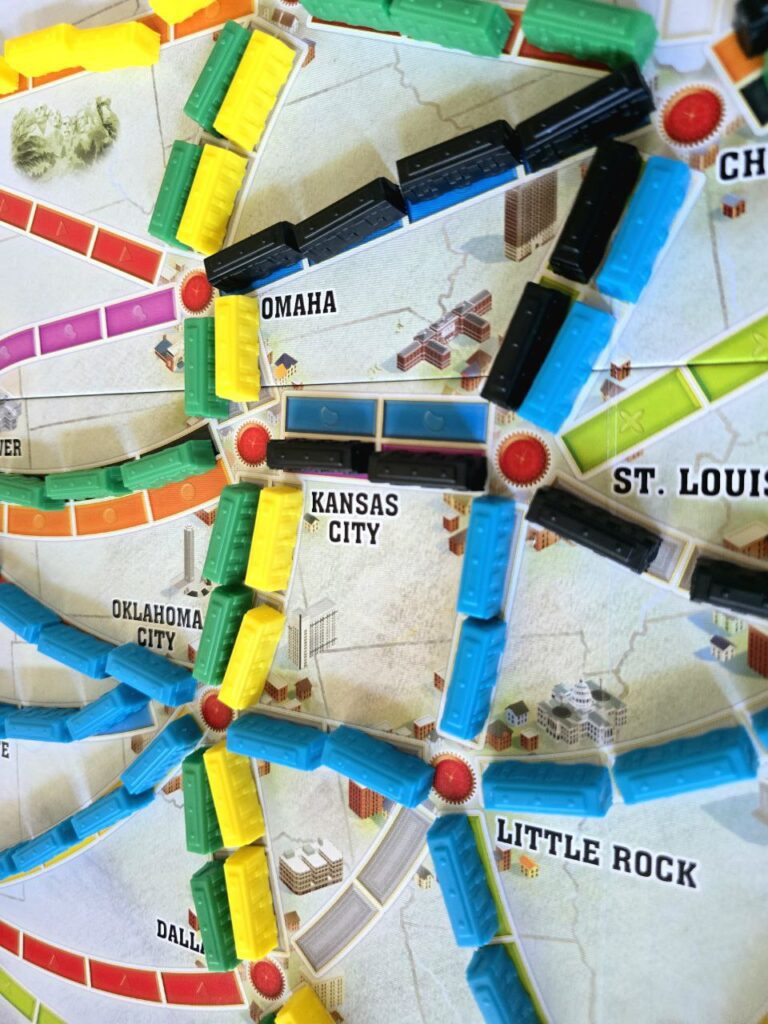
While the decision space isn’t deep, that’s not the point. Ticket to Ride is designed to be a gateway game, an experience focused on spending time with friends and family. It will always have a place in my collection, because the reactions from first-time players are priceless. I’ve seen the look of sudden victory when someone completes their final ticket against all odds, and the groan of defeat when a long-anticipated route is blocked at the last second. These are the moments that turn casual players into lifelong gamers.
It’s also a game that adapts to the table it’s on. With younger players, it’s a gentle lesson in strategy and planning. With experienced gamers, it can turn into a knife fight over rail lines. It can be played quietly over coffee or loudly in the middle of a raucous game night. The updated edition only reinforces its timeless appeal, reminding us that good design never really goes out of style.
This new refresh adds a vibrant coat of paint to an already visually appealing game. The palette of colors is brighter, and the addition of local landmarks to the game board enhances its route-building charm. However, mechanically, the game remains the same. If it’s not already in your collection, I’d recommend picking up the latest update. Otherwise, veterans won’t be missing much.
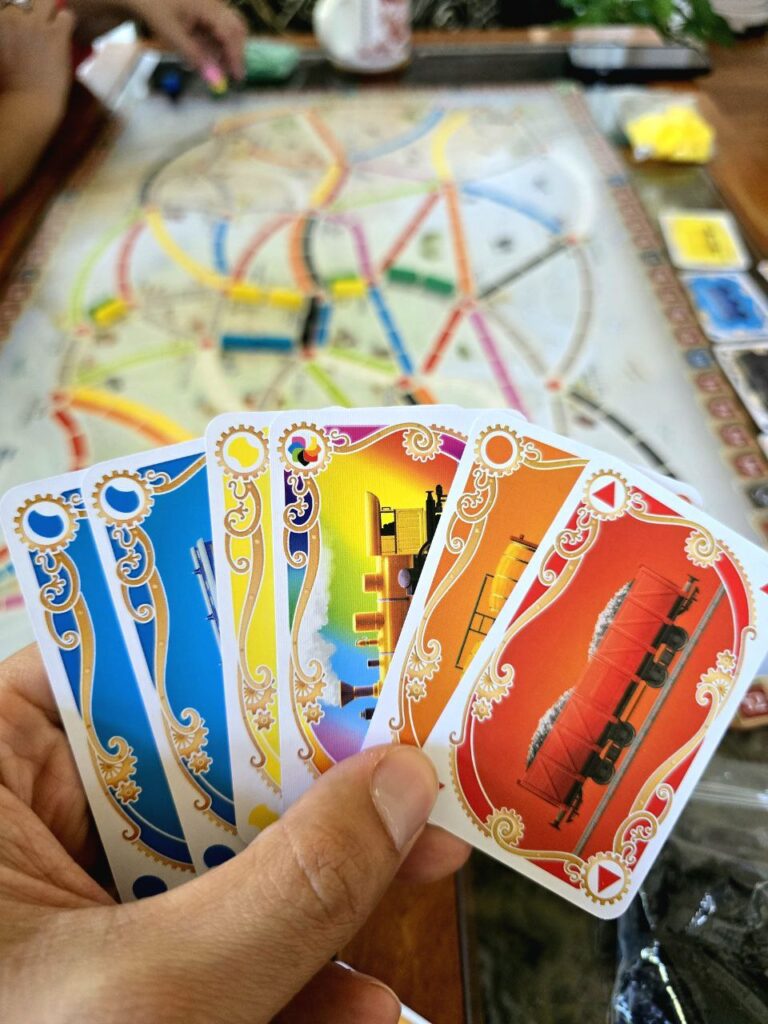
With its foundation built on accessibility, charm, and replayability, it’s hard to imagine Ticket to Ride’s fame fading any time soon. I wouldn’t be surprised if it remains a board game staple for generations to come—passed down from parents to kids, gifted at holidays, and forever earning its spot as one of the games that defined modern board gaming.





